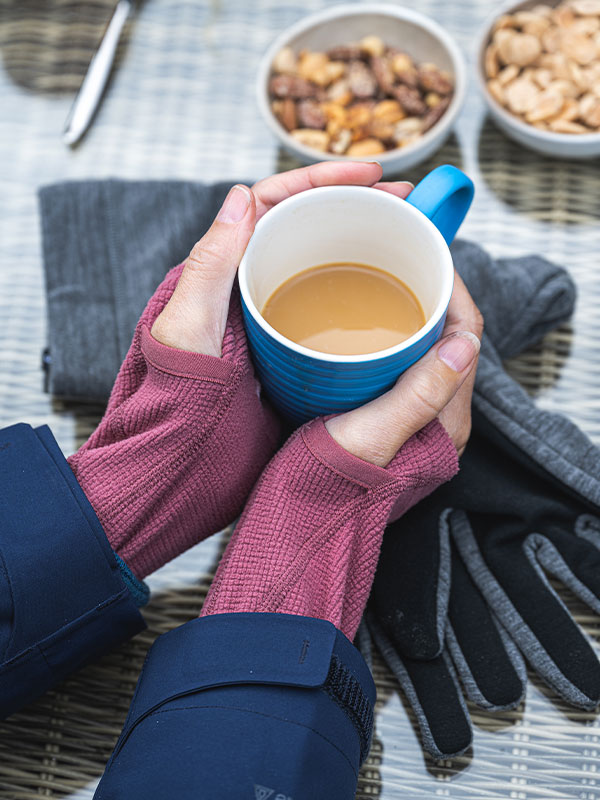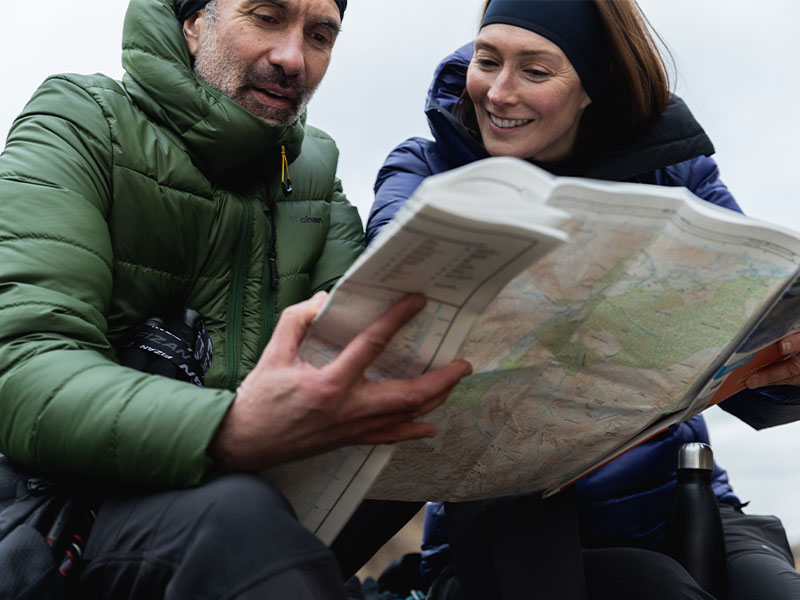30th Oct 2023
Safe Winter Walking
Mountain Leaders Alan Ward and Helen Menhinick offer some tips to help keep your winter adventures safe and enjoyable.
30th Oct 2023
Mountain Leaders Alan Ward and Helen Menhinick offer some tips to help keep your winter adventures safe and enjoyable.
The winter weather shouldn’t stop you from enjoying a hike, walk, or ramble through the countryside. The winter landscape holds some stunning sights for all levels of outdoor enthusiasts, but it’s essential to make sure that you’re fully prepared for your cold-weather adventures.
Alan Ward and Helen Menhinick are highly knowledgeable and experienced Mountain Leaders who have been kind enough to offer some tips to help keep your winter adventures safe and enjoyable.

Get out early! With fewer daylight hours available to us, it’s important to get an early start to be out on the hills and mountains by daylight, and back home before it gets dark. This will not only enhance your experience of the outdoors by ensuring you get the most out of your day, but it will help to keep you safe too. When it gets dark in the winter season, temperatures plummet and the air temperature will start to feel much colder. So where possible, make sure you plan your winter adventures around the amount of daylight available.
Plan your food. Try to start the day with a hearty and healthy breakfast. This will ensure that you have plenty of energy for the start of your adventure and should mean that you get a few hours of exploring before you need to eat again. It’s a good idea to take lots of snacks with you to eat on the go. In cold weather, eating small snacks throughout the day is much more efficient than taking a prolonged lunch stop where you might start to get cold. So make sure you pack lots of easily accessible snacks to keep you going!
Layer up. As any experienced outdoor enthusiast will tell you, the key to thriving in the cold and variable conditions of the winter season is to have an effective layering system in place. We’d recommend that you always bring a high-quality waterproof layer, insulating mid-layers, and a wicking base-layer. It’s also a good idea to carry spare gloves as they can easily blow away when taken off, and it’s always advisable to pack a spare insulation layer in case temperatures are lower than you expect.
View our full Rohan Layering Guide here and explore our 5-Layer system.
Always be prepared. Winter weather can be very unpredictable, and when you’re venturing into the great outdoors, there’s no such thing as being too prepared. When exploring more remote areas, it’s recommended to bring a medium sized shelter, a sit mat, and a first aid kit. As the old adage says: prepare for the worst, hope for the best. If you’d like to start pursuing more challenging routes and terrain, it’s a good idea to book yourself on a winter skills course to make sure you have the knowledge and skills necessary to thrive in the outdoors.
Choose your route. Ensure that the route and terrain you choose matches the skill and experience level of those going with you. If you’re following a trail that you haven’t been on before, it’s important to do plenty of research beforehand. You should know the distance, elevation, and difficulty level of your route. And if you’re going on a solo adventure, it’s important that you always communicate your planned route to a responsible person at home.
By following the tips provided by Alan and Helen, you can dramatically increase the safety of your winter adventures and explore with confidence this winter season.
If you’d like to take your outdoor skills to the next level, we’d highly recommend booking a course with Alan and Helen. They are highly experienced Mountain Leaders offering Mountain Training courses, NNAS certified navigation courses, REC First Aid Courses, and many other fantastic training opportunities.
For more information or to book yourself onto a course, visit their websites here:
https://brynwalking.weebly.com/

